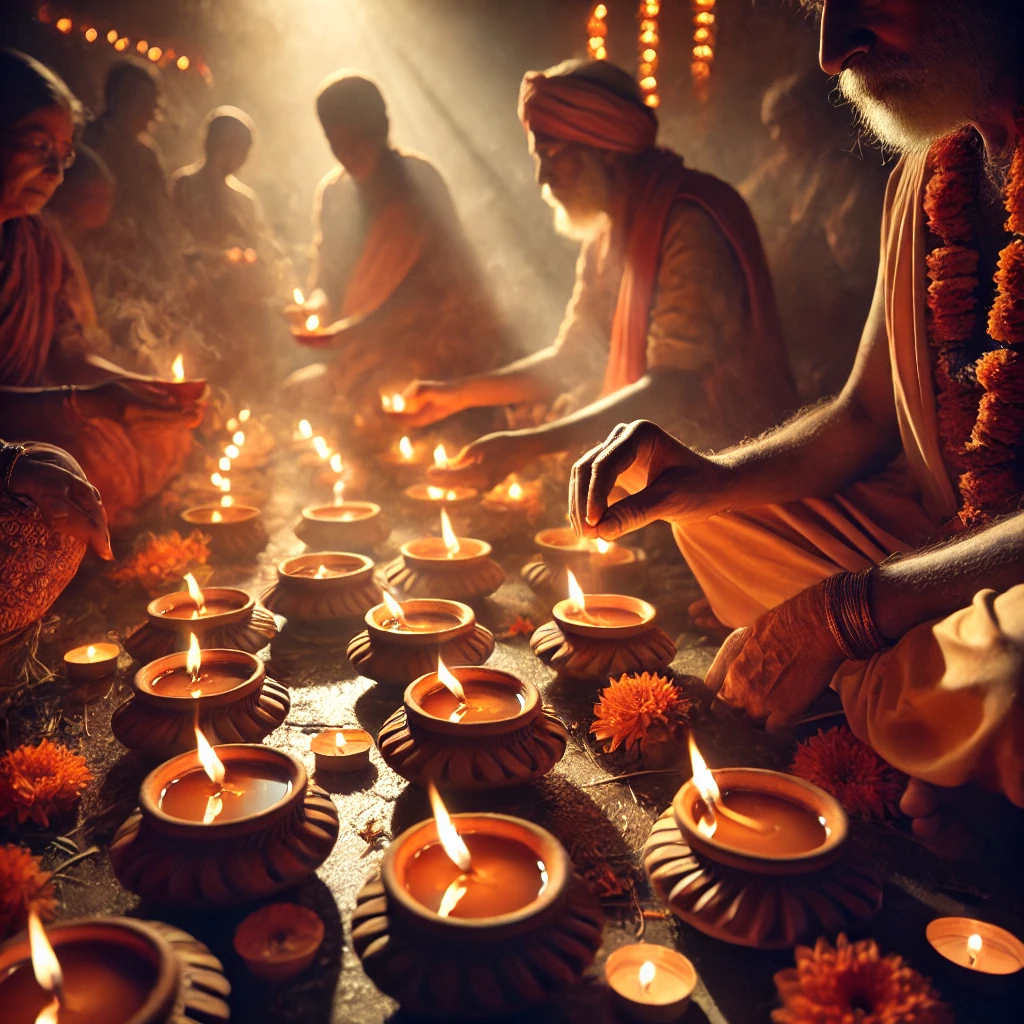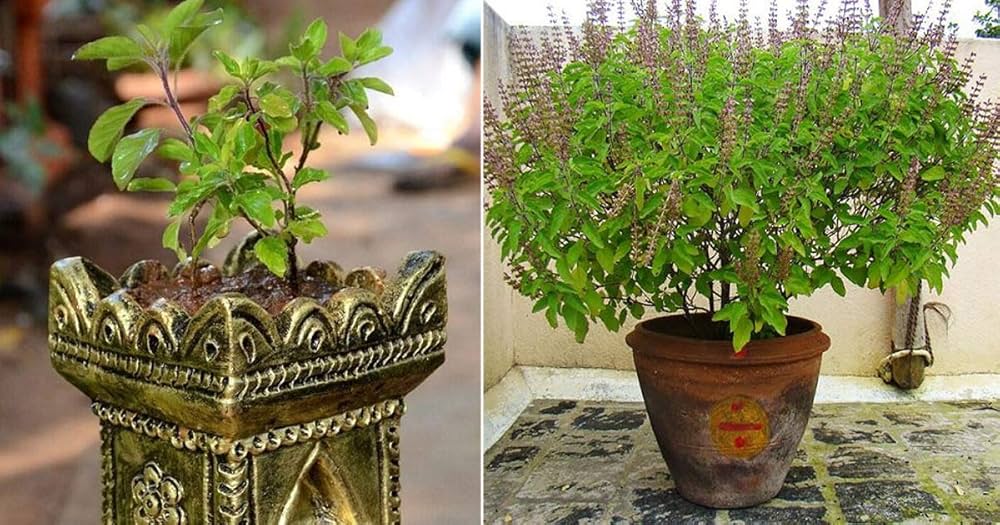
October 18, 2024
Introduction to Kartik Month
Kartik month, revered as one of the most auspicious periods within the Vedic calendar, holds profound significance for Vaishnava devotees of Lord Krishna. This month serves not merely as a time for ritualistic observance but as an invaluable opportunity to deepen one’s spiritual relationship with the Divine. As articulated in the Padma Purana, “kārtikaḥ syād bhavānugrahaḥ” (कार्तिकः स्याद् भवन्ग्रहः), it is during Kartik that the grace of Krishna is most readily accessible to His devotees.

Significance of Kartik Month
Throughout the month of Kartik, even the smallest acts of devotion yield immense spiritual rewards. Krishna Himself has declared this month as particularly dear to Him, reinforcing the belief that any sincere engagement can bring one closer to the Divine. The Bhagavad Gita supports this notion through the verse, “yo māṁ bhaktyā prayāchati, tāṁs tathaiva bhajāmy aham” (यो मां भक्त्या प्रयाचति, तांस्तथा एव भजाम्यहम्), affirming that those who worship with devotion are cherished by the Lord.

Celebration in Vrindavan
Vrindavan, the sacred land of Krishna’s childhood pastimes, becomes the epicenter of Kartik celebrations. During this month, devotees commonly invoke Krishna in His Damodara form—the infant tied by His mother, Yashoda. This imagery symbolizes unconditional love and devotion, serving as a reminder of the intimate bond shared between Krishna and His devotees. In Raman Reti close to Gokula, there are temples related with legend of Krishna eating the sand, him being tied by Mother Yashoda through a Daama (rope) around his waist (Udar) leading to his famous name – Damodara.

The Power of Damodara Ashtakshara
Within Vaishnava temples worldwide, the offering of ghee lamps to Krishna, accompanied by the chanting of the Damodara Ashtakam, forms a central devotional practice during Kartik. These prayers celebrate Krishna’s playful pastimes and allow devotees to connect with His divine energy. The Skanda Purana articulates this further, stating, “dīpāyate dharmaṁ jīvāya te yathaiva gṛhīyate” (दीपायते धर्मं जीवाय ते यथैव गृहीयते), highlighting that the act of lighting lamps serves as a means of spiritual purification.
Spiritual Benefits of Offering Lamps
The act of lighting lamps during Kartik is a simple yet profoundly impactful practice. Scriptures emphasize that such offerings can cleanse sins accumulated over numerous lifetimes. It is said that “by offering a lamp during the month of Kartika, one attains results far greater than bathing at holy sites during eclipses.” The significance of this practice is reiterated in the Skanda Purana, which posits that “lighting a lamp leads to the removal of sinful reactions.”

Kartik: The Month of Festivals
Kartik is adorned with vibrant festivals such as Naraka Chaturdashi, Deepawali, Govardhana Pooja and Dev Uthaan Ekadashi, fostering community spirit and collective devotion. These celebrations exemplify the importance of dharma, resonating with the verse, “yadā yadā hi dharmasya glānir bhavati bhārata” (यदा यदा हि धर्मस्य ग्लानिर भवति भारत), from the Bhagavad Gita, which underscores the necessity of preserving righteousness.

- Key Festivals:
- Naraka Chaturdashi: Celebrates the legend of Krishna & his wife SatyaBhama defeating Narkaasura , and freeing 16000 women in his captivity . Ashvakranta Temple @ Guwahati, marks the site where Krishna tied his horses after the episode
- Deepawali: The festival of lights, celebrated widely with great enthusiasm during Kartik. This is considered to be the time when after churning of cosmic ocean of KsheerSaagar, Mother Lakshmi emerged and chose Lord Vishnu as per husband. MahaaKumbh related with this episode, is organized over 12 years cycle at 4 places – Prayagaraja, Haridwara, Naasik & Ujjain.
- Govardhan Puja: Krishna explained the nuances of Varna-Ashram Dharma to cowherd of Vraja, and shifted their Yagya towards sacred Govardhan Hill, instead of Indra, as it blesses their cows – their main sources of income. Circumbation around Govardhan Hill is highly popular on this date.
- Deva Uthaan Ekadashi: This marks the end of 4 month long ChaturMaas period, during which Vishnu is believed to be resting, and hence wandering monks across Vaidik, Jain or Bauddh faiths take rest from constant travel
Recommended Practices for Devotees
To fully engage with the spiritual richness of Kartik, devotees are encouraged to adopt the following practices:
- Lamp Offering: Daily offer a ghee lamp to Krishna, symbolizing devotion and light in one’s life.
- Chanting the Damodara Ashtakshara: Recite the Damodar Ashtakam regularly to immerse oneself in Krishna’s pastimes.
- Holy Bathing: Begin each day with a holy bath, which is believed to confer the benefits of pilgrimage.
- Devotional Music: Engage in kirtans or listen to devotional songs, particularly the Hare Krishna mantra, known for its transformative power.
- Temple Visits: Participate in communal worship by visiting temples of Vraja during this month. Notable sites include:
- Krishna Janmabhoomi in Mathura, the birthplace of Krishna.
- Gokulnath Temple in Gokul, where Krishna’s childhood pastimes are remembered.
- Govardhan Hill, where the Govardhan Puja is performed.
- Nand Baba Temple in Nandgaon, dedicated to Krishna’s foster father.
- Radhakund, a sacred site for bathing and rituals associated with Radha and Krishna.
- Tulsi Worship: Offer Tulsi leaves to Krishna daily, reinforcing the bond with the divine.
- Scriptural Study: Dedicate time to read from sacred texts, such as the Srimad Bhagavatam, to deepen understanding and devotion.

Recitation of Gopi Geet
This month is also designated as Urja Vrat, honoring Krishna’s divine potency. The Gopis’ rendition of the Gopi Geet during Kartik reflects their profound love for Krishna, embodying the devotional sentiment that permeates this season. The verse, “vande rūpam, sūrupam, tasyāham, saṅgatiṁ sadā” (वन्दे रूपं, सूरतं, तस्याहं, सङ्गतिं सदा), illustrates the depth of the Gopis’ devotion and their longing for divine connection.

To conclude
As the sacred month of Kartik unfolds, it presents an invaluable opportunity for reflection and spiritual growth. Devotees are encouraged to embrace the aforementioned practices and immerse themselves in the blessings that accompany genuine devotion. This period not only facilitates a deeper connection with Krishna but also serves as a profound avenue for spiritual transformation.

JaYa ShRee DaaMoDaRa!!!
Kartik Krishna Pratipada, Vikram Samvat 2081
October 18th, Gregorian 2024

